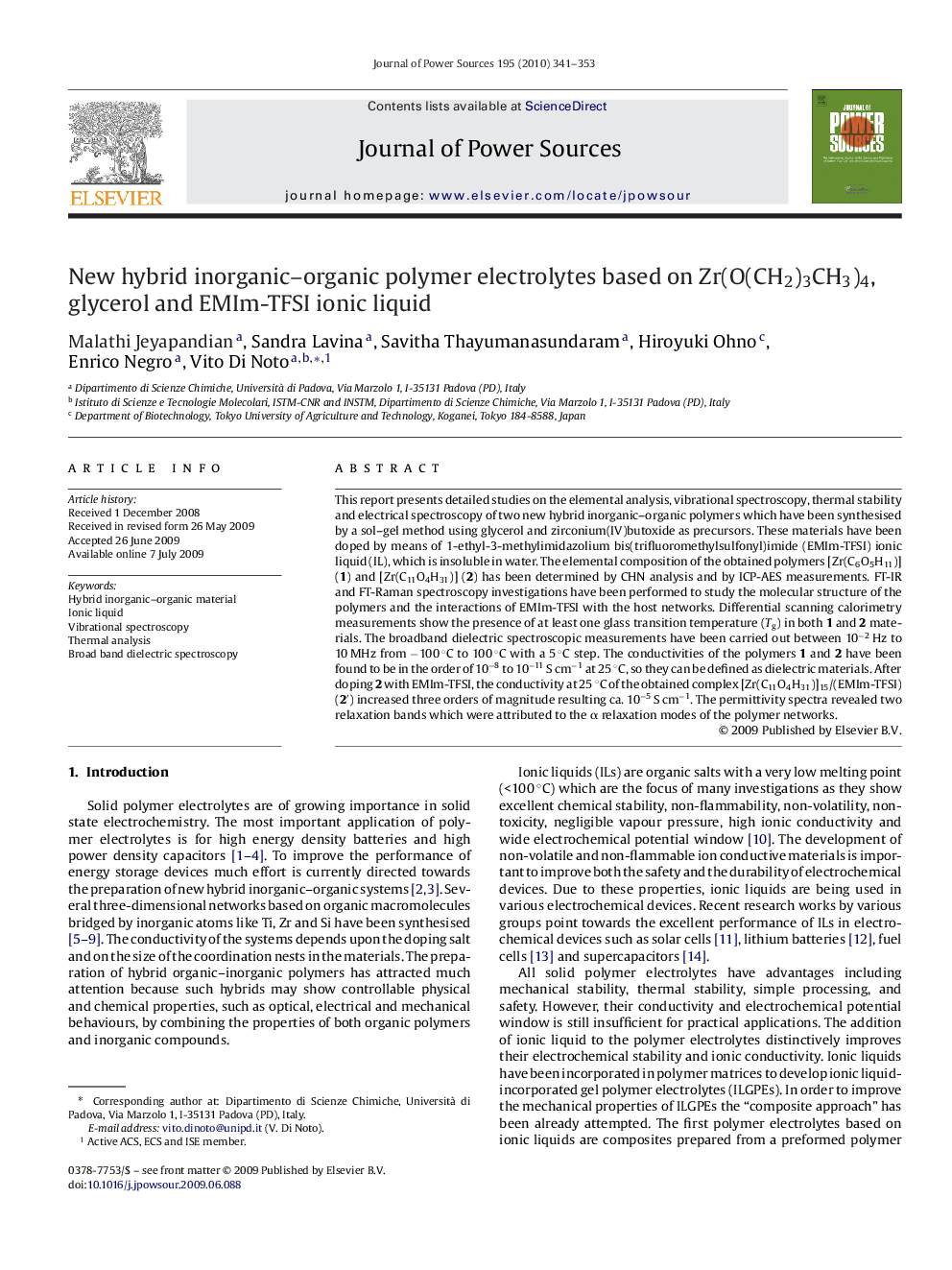| Article ID | Journal | Published Year | Pages | File Type |
|---|---|---|---|---|
| 1293989 | Journal of Power Sources | 2010 | 13 Pages |
This report presents detailed studies on the elemental analysis, vibrational spectroscopy, thermal stability and electrical spectroscopy of two new hybrid inorganic–organic polymers which have been synthesised by a sol–gel method using glycerol and zirconium(IV)butoxide as precursors. These materials have been doped by means of 1-ethyl-3-methylimidazolium bis(trifluoromethylsulfonyl)imide (EMIm-TFSI) ionic liquid (IL), which is insoluble in water. The elemental composition of the obtained polymers [Zr(C6O5H11)] (1) and [Zr(C11O4H31)] (2) has been determined by CHN analysis and by ICP-AES measurements. FT-IR and FT-Raman spectroscopy investigations have been performed to study the molecular structure of the polymers and the interactions of EMIm-TFSI with the host networks. Differential scanning calorimetry measurements show the presence of at least one glass transition temperature (Tg) in both 1 and 2 materials. The broadband dielectric spectroscopic measurements have been carried out between 10−2 Hz to 10 MHz from −100 °C to 100 °C with a 5 °C step. The conductivities of the polymers 1 and 2 have been found to be in the order of 10−8 to 10−11 S cm−1 at 25 °C, so they can be defined as dielectric materials. After doping 2 with EMIm-TFSI, the conductivity at 25 °C of the obtained complex [Zr(C11O4H31)]15/(EMIm-TFSI) (2′) increased three orders of magnitude resulting ca. 10−5 S cm−1. The permittivity spectra revealed two relaxation bands which were attributed to the α relaxation modes of the polymer networks.
